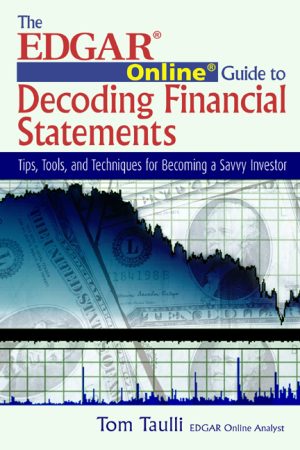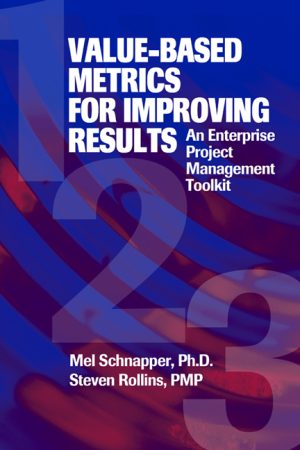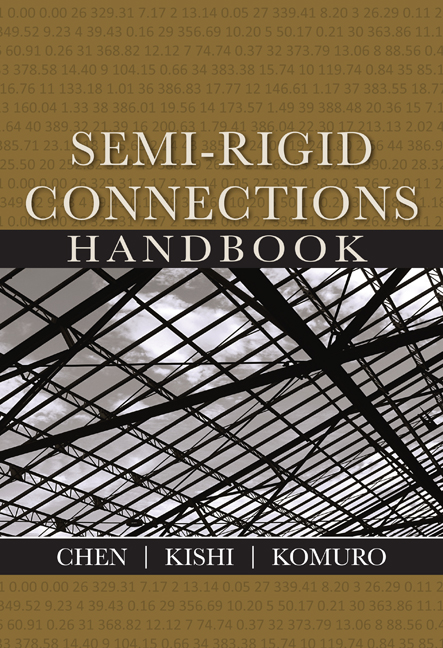Semi-Rigid Connections Handbook
$169.95
Edited by Wai-Fah Chen, Norimitsu Kishi, and Masato Komuro
Hardcover, 7 x 10, 1,256 pages
ISBN: 978-1-932159-99-8
January 2011
A Title in the J. Ross Publishing Civil & Environmental Engineering Series
Description
Research on the topic of steel frames with semi-rigid connections (Partially Restrained (PR) construction or PR connection) has been conducted over the past 10 years. Despite significant research and development efforts, usage of PR principles has nevertheless been very slow in coming to the profession caused in part by the lack of easy access to reliable test data on these connections and also due to the lack of software for practical implementation. With the publication of the 2005 AISC specifications as well as Eurocode 3, practical implementation of the use of PR connections in structural systems is now a real possibility. This Handbook presents a simple and comprehensive introduction that will help design practitioners implement these new developments into engineering practice. Beginning with a discussion of the new specifications and classifications of these connections, the authors go on to show, on the basis of the collected connections database, practical mathematical models for computer implementation, and provide case studies on these frames including composite construction. With the help of the user-friendly list of collected data in tabular form with illustrative figures, information on semi-rigid connections is now available in a single publication and may ultimately result in its wide-spread usage among practitioners.
Key Features
- Introduces the 2005 AISC specifications and the new Eurocode 3 on semi-rigid construction
- Includes more than 900 semi-rigid connection test data in tabular form with figures
- Provides connection models for analysis and design with case studies
- Includes the recent development of steel-concrete composite connections with case studies
- Offers online, updated information and test data for WAV users
About the author(s)
Dr. Wai-Fah Chen was Professor and Dean of the College of Engineering at the University of Hawaii from 1999 to 2006. The author or co-author of 20 books, his primary areas of research are constitutive modeling of engineering materials, soil and concrete plasticity, structural connections, and structural stability. He is a member of the U.S. National Academy of Engineering and an Honorary member of the American Society of Civil Engineers.
Dr. Norimitsu Kishi is Professor, Structural Engineering Chair, and Director of the Structural Mechanics Laboratory in the Department of Civil Engineering and Architecture at the Muroran Institute of Technology.
Dr. Masato Komuro is Assistant Professor at the Muroran Institute of Technology, Department of Civil Engineering and Architecture.
Table of Contents
Preface –W. F. Chen, University of Hawaii, USA
About the Editors
Section I. Specifications and Classifications – Y. Goto, Nagoya Institute of Techology, Japan
1. Classification and AISC Specification
1.1. Classification of connections
1.1.1. General
1.1.2. EC3 classification system (CEN 2005)
1.1.3. AISC classification system (AISC 2005)
1.1.4. Bjorhovde et al. classification system (Bjorhovde et al. 1990)
1.1.5. Nethercot et al. classification system (Nethercot et al. 1998)
1.1.6. Goto et al. classification system (Goto et al.1998)
1.1.7. Comparison of existing classification systems
1.2. AISC Specification
1.2.1. Introduction
1.2.2. Connection classification
1.2.3. Structural analysis and design for frames with PR connections
References
Section II. Effects of Semi-Rigid Connections on Structural Members and Frames – Eric M. Lui and Zhiling Zhang, Syracuse University, USA
2. Effects of Semi-Rigid Connections on Structural Members and Frames
2.1. Introduction
2.1.1. Connection Behavior
2.1.1.1. Connection Stiffness
2.1.1.2. Connection Strength
2.1.1.3. Connection Rotational Ductility
2.2. Effects of Semi-Rigid Connections on Columns
2.2.1. Column Effective Length Factor
2.2.2. K Factor for Columns in Semi-Rigid Frames
2.2.2.1. Sway Prevented Frames
2.2.2.2. Sway Permitted Frames
2.2.2.3. Procedure for Evaluating K using the Modified Moment of Inertia Approach
2.2.2.4. Other Approaches for K Factor Computation
2.2.2.5. Column Strength Design Equations
2.3. Effects of Semi-Rigid Connections on Beams
2.3.1 Lateral Torsional Buckling Load for Compact Beams
2.3.1.1 Beam Strength Design Equations
2.3.2 Beams with Semi-Rigid Connections
2.3.2.1 Analysis of Semi-Rigid Beams
2.3.2.2 Design of Semi-Rigid Beams
2.4. Effects of Semi-Rigid Connections on Frames
2.4.1. Analysis of Semi-Rigid Frames
2.4.1.1. Elastic Bifurcation Analysis of Semi-Rigid Frames
2.4.1.1.1. Beam Stiffness Relationship
2.4.1.1.2. Column Stiffness Relationship
2.4.1.2. Load Deflection Analysis of Semi-Rigid Frames
2.4.1.3. Allowance for the Formation of Plastic or Connection Hinges
2.4.2. Design of Semi-Rigid Frames
2.4.2.1. Design of Sway Prevented Semi-Rigid Frames
2.4.2.1.1. Design of Beams
2.4.2.1.2. Design of Columns
2.4.2.2. Design of Sway Permitted Semi-Rigid Frames
2.4.2.2.1. Design of Beams
2.4.2.2.2. Design of Columns
2.4.3 Drift of Semi-Rigid Frames
2.5. Summary and Conclusions
References
Section III. Steel Connection Database and Modeling – N. Kishi and M. Komuro, Muroran Institute of Technology, Japan
3. Types of PR connections
3.1 Single Web-Angle Connections/Single Plate Connections
3.2 Double Web-Angle Connections
3.3 Top- and Seat-Angle Connections with Double Web-Angle
3.4 Top- and Seat-Angle Connections
3.5 Extended End-Plate Connections/Flush End-Plate Connections
3.6 Header Plate Connections
References
4. Modeling of Connections
4.1. General Remarks
4.2. Classification of connection models
4.2.1. Analytical models
4.2.2. Mathematical models
4.2.3. Mixed models
4.3. Behavior under monotonic loading
4.3.1. Linear model
4.3.2 Polynomial model
4.3.3. Exponential Model
4.3.4. Power model
4.3.5. Bounding line model
4.3.6. Ramberg-Osgood model
4.3.7. Richard-Abbott model
4.4. Behavior under cyclic loading
4.4.1. Independent hardening model
4.4.2. Kinematic hardening model
4.4.3. Bounding surface model with internal variables
References
5. Steel Connection Database
5.1. General remarks
5.2. Parameter Definition for Connection Type
5.2.1. Single Web-Angle Connections/Single Plate Connections
5.2.2. Double Web-Angle Connections
5.2.3. Top- and Seat-Angle Connections with Double Web-Angle
5.2.4. Top- and Seat-Angle Connections
5.2.5. Extended End-Plate Connections
5.2.6. Flush End-Plate Connections
5.2.7. Header Plate Connections
5.3. Steel Connection Data Bank Program
5.3.1. Outline of SCDB
5.3.2. Use’s manual for program SCDB
5.3.3. Examples
5.4. Web-site of connections
References
Section IV. Steel-Concrete Composite Connections – Hong Chen, Offshore Tech. Development Pte Ltd, Singapore and J. Y. R Liew, National University of Singapore
6. Advanced Analysis of Steel and Composite Semi-Rigid Frames
6.1. Structural Frames
6.1.1. Rigid Frames
6.1.2. Simple Frames
6.1.3 Bracing Systems
6.1.4 Braced Versus Unbraced Frames
6.1.5. Sway versus Non-Sway Frames
6.1.6. Beam-to-Column Connections
6.1.6.1. Connection Classification
6.1.7. Analysis and Design of Semi-Rigid Frames
6.1.8. Frame Stability
6.1.8.1. Imperfection Effects
6.1.8.2. Limit States Design
6.1.8.3. Second-Order Analysis
6.1.8.4. Direct Analysis Approach
6.2. Advanced Analysis of Steel Frames
6.2.1. Development of Advanced Analysis
6.2.1.1. Assessment Approaches for Strength and Stability
6.2.1.2. Direct Analysis of Frame’s Stability and Strength
6.2.1.3. Application to Tubular Structures
6.2.2. Stiffness Formulation of Beam-Column
6.2.2.1. Available Stiffness Formulations
6.2.2.2. Virtual Work Equation
6.2.2.3 Stability Interpolation Functions
6.2.2.4. Elastic and Geometric Stiffness Matrices
6.2.2.5. Beam-Column Approach and Member Bowing Effect
6.2.2.6. Stability and Bowing Functions
6.2.2.7. Tangent Stiffness Matrix
6.2.3. Modeling of Material Nonlinearity in Beam-Column
6.2.3.1. Methods for Modeling Material Nonlinearity
6.2.3.2. Plastic Strength Surface
6.2.3.3. Concentrated Plastic Hinge Formulation
6.2.3.4. Two-Surface Plastic Hinge Formulation
6.2.3.5. Numerical Strategies for Plastic Hinge Analysis
6.2.3.6. Plasticity Formulation at Elevated Temperature
6.2.3.7. Modeling of Lateral-Torsion Buckling
6.2.3.8. Modeling of Local Buckling
6.2.4. Updating of Element Forces and Geometry in Beam-Column
6.2.4.1. Force Recovery based on the Natural Deformation Approach
6.2.4.2. Geometry Updating and Web Plane Vector
6.2.5. Modeling of Truss Element
6.2.6. Modeling of Semi-Rigid Connections
6.2.6.1. Connections in Building Frame
6.2.6.2. Tubular Joints
6.2.7. Numerical Examples
6.2.7.1. Tubular Frame with K-Type Joints
6.2.7.2. Bowstring Column
6.2.7.3. Bowstring Frame
6.2.7.4. Fire Analysis of Semi-rigid Frames
6.3. Advanced Analysis of Composite Frames
6.3.1. Composite Members – Advanced Analysis
6.3.2. Modeling of Composite Column
6.3.3. Modeling of Composite Beam
6.3.4. Modeling of Building Core Wall
6.3.5. Modeling of Composite Semi-Rigid End Plate Connection
6.3.5.1. Moment Resistance
6.3.5.1.1. Negative Moment Capacity
6.3.5.1.2. Determination of Potential Bolt Forces Pri
6.3.5.1.3. Positive Moment Capacity
6.3.5.1.4. Panel Zone Shear Resistance
6.3.5.2. Rotational Stiffness
6.3.5.2.1. Rotational Stiffness under Negative Moment
6.3.5.2.2. Rotational Stiffness under Positive Moment
6.3.5.3. Comparison with Test Results
6.3.6. Analysis of 20-Story Steel Frame with Composite Beams
6.3.7. Analysis of Core-Braced Multi-Story Frame
Appendix 1 Elastic stiffness matrix, ke
Appendix 2 Geometric stiffness matrix, kg
Appendix 3 Bowing matrix, kb
Section V. Case Study – Y. P. Liu, and S. L. Chan, The Hong Kong Polytechnic University, Hong Kong and Dennis Lam, University of Leeds, U.K.
7. Case Studies for Second-Order (Direct) Analysis of Semi-Rigid Frames in Hong Kong
7.1. Introduction
7.2. Second-order integrated design and analysis
7.2.1. P-Ä and P-ä effects
7.2.2. Initial imperfections
7.2.2.1. Member imperfections
7.2.2.2. Frame imperfections
7.3. Modeling of semi-rigid jointed members
7.4. Examples
7.4.1. Example 1 The hemispherical dome at roof of a building
7.4.1.1. Structure description
7.4.1.2. Load Path
7.4.1.3. Computer Method of Analysis
7.4.1.4. Design Code
7.4.1.4.1. Material Properties
7.4.1.4.2. Section assignment and connections
7.4.1.4.3. Load Combination
7.4.1.5. Boundary conditions
7.4.1.6. Connection stiffness
7.4.1.7. Imperfections
7.4.1.7.1. Member imperfections
7.4.1.7.2. Frame imperfections
7.4.1.8. Additional vibration frequency
7.4.1.9. Load carrying capacity
7.4.2. Example 2 The shallow roof at the top of a building
7.4.2.1. Structure description
7.4.2.2. Load Path
7.4.2.3. Computer Method of Analysis
7.4.2.4. Design Code
7.4.2.4.1. Material Properties
7.4.2.4.2. Section assignment and connections
7.4.2.4.3. Load Combination
7.4.2.5. Boundary conditions
7.4.2.6. Connection stiffness
7.4.2.7. Imperfections
7.4.2.7.1. Member imperfections
7.4.2.7.2. Frame imperfections
7.4.2.8. Additional vibration frequency
7.4.2.9. Load carrying capacity
7.5. Conclusions
References
Appendix. Experimental data of SCDB
A-1 Single web angle / Single plate connections
A-2 Double web angle connections
A-3 Top- and seat-angle with double web-angle connections
A-4 Top- and seat-angle connections
A-5 Extended end-plate connections
A-6 Flush end-plate connections
A-7 Header end-plate connections
Index
Related products
-

Directing the Flow of Product
Retail Price: $59.95$49.95 Add to cart -

Winning E-Learning Proposals
Retail Price: $64.95$54.95 Add to cart -

The EDGAR Online Guide to Decoding Financial Statements
Retail Price: $34.95$29.95 Add to cart -

Value-Based Metrics for Improving Results
Retail Price: $54.95$49.95 Add to cart -

Dynamics of Profit-Focused Accounting
Retail Price: $54.95$44.95 Add to cart

